BradNaylor
Established Member
- Joined
- 17 Oct 2007
- Messages
- 2,311
- Reaction score
- 2
I've posted this before but not on the Jigs & Tips forum. This is unbelievably useful.
To turn a standard router into an effective lipping trimmer simply bolt on a piece of MDF or plywood to the router base like this. On my DeWalt it simply involves removing the short bolts which hold the plastic base in place and replacing them with longer ones through the MDF.
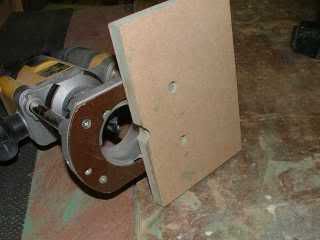
Then install a 20mm (or thereabouts) flat-bottomed cutter into the router and adjust the height setting so that the bottom of the cutter is exactly level with the MDF sub-base. The best way of dong this is to plunge the router down onto a flat surface such as the cast iron bed of your planer or table saw. With the router turned off, of course!
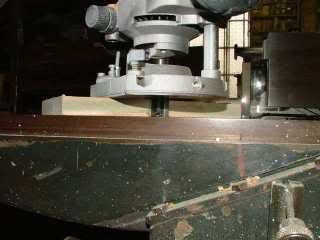
Lip your board with a good couple of millimetres step on each side.
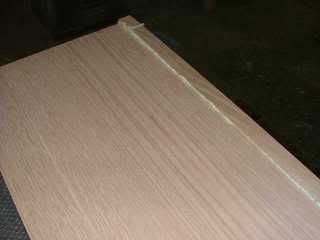
Then very carefully rout away at the lipping making sure that the router doesn't tip at all. Best results are obtained if you pull the router towards you with everything set up as in the photo. That way any break-out is avoided.
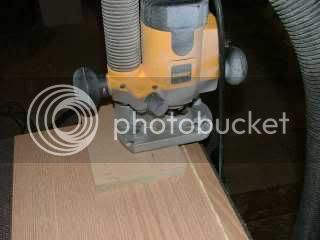
Then a very light sand and the process is complete.
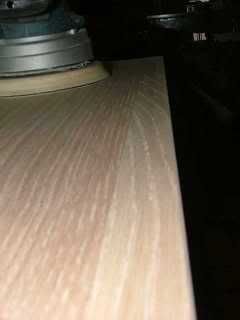
Try it - you'll be amazed!
Cheers
Dan
To turn a standard router into an effective lipping trimmer simply bolt on a piece of MDF or plywood to the router base like this. On my DeWalt it simply involves removing the short bolts which hold the plastic base in place and replacing them with longer ones through the MDF.

Then install a 20mm (or thereabouts) flat-bottomed cutter into the router and adjust the height setting so that the bottom of the cutter is exactly level with the MDF sub-base. The best way of dong this is to plunge the router down onto a flat surface such as the cast iron bed of your planer or table saw. With the router turned off, of course!

Lip your board with a good couple of millimetres step on each side.

Then very carefully rout away at the lipping making sure that the router doesn't tip at all. Best results are obtained if you pull the router towards you with everything set up as in the photo. That way any break-out is avoided.

Then a very light sand and the process is complete.

Try it - you'll be amazed!
Cheers
Dan




